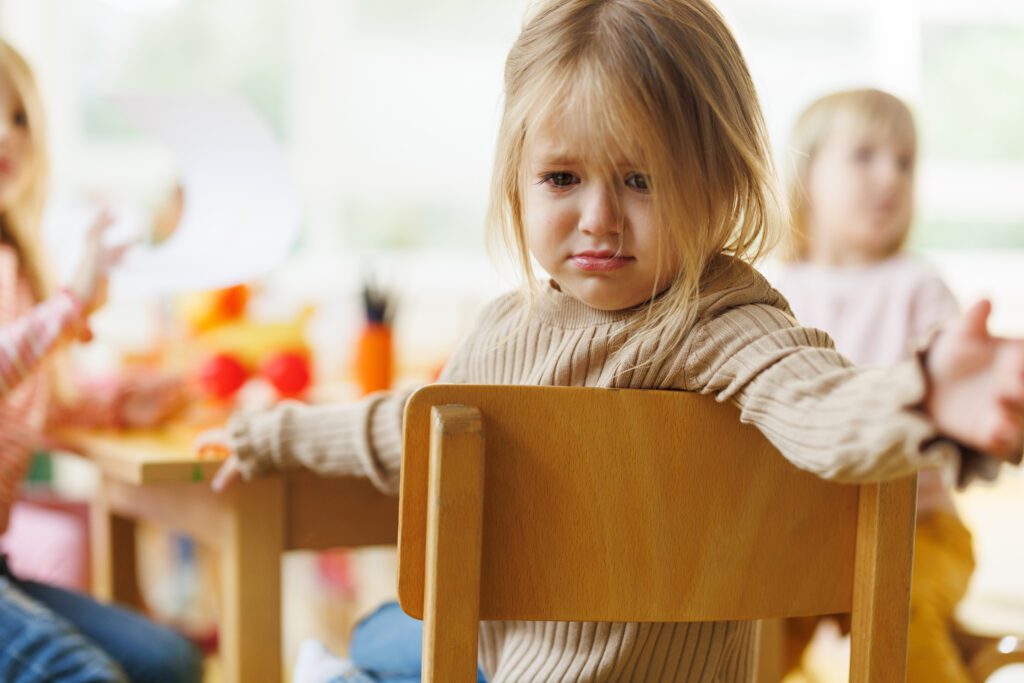7 Tips for Promoting the Self-Regulation of Toddlers and Twos


Even with years of experience working with children; practical knowledge of positive guidance; and a deep understanding of child development theory, brain development, and best practices for working with toddlers, most teachers will face the spectacular force that is the toddler who has found their voice!
We know that each child is unique, and so is their development. As children become more mobile and their verbal abilities develop, so does their desire for independence! At this very same time, toddlers experience a period of enormous growth and development. Suddenly, they can go anywhere their feet take them. They begin using new words to express themselves and make their opinions known.
We know a child has entered the toddler phase of life when they discover how to say “No!”
The growth we see in toddlers’ verbal, physical, and cognitive development is exciting for the child, their family members, and their teachers and caregivers. However, just as children need to develop the muscles needed to walk, they need to develop the social–emotional skills for self-regulation and emotional regulation that will empower them to manage their emotions and behaviors throughout their lives!
Before we introduce a few ideas for self-regulation activities, let’s define these terms.
What does self-regulation mean for toddlers?
Self-regulation is the process of managing emotions, behaviors, and actions. For toddlers who are developing their self-regulation skills, having greater understanding and control of this process allows them to respond to situations and interact positively with others. This includes learning how to calm down after a stressful situation, control impulsive behaviors, and maintain flexibility in their expectations or their environment.
What does “emotional regulation” mean for toddlers?
“Emotional regulation” refers to the ability of a child to understand and manage their emotions and respond to situations appropriately. Emotional regulation requires learning to recognize their own emotions and how these emotions feel in their bodies and how to express their emotions in constructive ways.
7 Self-Regulation Strategies for Toddlers
With toddlers, every day presents authentic opportunities to validate the children’s emotions, model appropriate responses to strong emotions, and offer calming strategies to allow them to manage their emotions and their bodies. A responsive, predictable learning environment also enables teachers to provide intentional support and activities for developing children’s self-regulation and emotional regulation skills.
Here are seven suggestions from The Creative Curriculum for Toddlers for promoting the self-regulation of toddlers in positive ways.
- Encourage their growing sense of independence. Invite them to participate in daily routines. Organize the environment so children can hang up their own coats and reach the sink to wash their hands.
- Give them chances to make choices. Limit the number of options to two or three so children aren’t overwhelmed by choices, e.g., “Do you want to use the red paper or the white paper first?”
- Keep in mind that toddlers (and most 2-year-olds) are not yet ready to share. This does not mean that they are greedy or mean-spirited. This is a big skill that requires time and support to develop. They will first learn to take turns, and then, over time, they will learn to share.
- Create a calm-down routine to support children’s emotional and self-regulation. Breathing techniques, such as pretending to blow up a balloon, can be used anywhere, requiring no special materials. For example, you might say, “Let’s hold our imaginary balloon. Breathe in slowly through your nose so we can make a big balloon. Now blow out all that air into the balloon with your mouth. Look how big your balloons are getting! Let’s do that again.” Calming techniques help children regulate their emotions and, often, see things a little clearer.
- Ask toddlers silly questions so they have lots of opportunities to say “no.” For example, you might ask, “Is it time for nap after breakfast?” or “Is there an elephant in your shoe?”
- Acknowledge children’s actions when they demonstrate self-control, e.g., “That was a safe choice, Leo. You put the block down. You did not throw it.”
- Use the word “no” sparingly. If you use it less, toddlers will use it less, too. Save it for unsafe situations so it will be more effective.
As teachers, caregivers, and family members support toddlers through this incredible stage of development, it’s important to remember that behind every “No!” is a child learning how to navigate the world, assert themselves, and connect with others. While it can be challenging in the moment, these behaviors are signs of healthy growth and development.
With the right tools, a responsive environment, and a lot of patience, we can help toddlers build the skills they need to thrive—emotionally, socially, and in all areas. The strategies we use today lay the foundation for a lifetime of self-regulation and resilience.
The Creative Curriculum for Toddlers is a comprehensive curriculum that offers daily support, guidance, and inspiration to teachers and caregivers of the youngest learners. It consists of The Foundation—research-based volumes that provide the “what” and “why” of responsive caregiving—and Daily Resources, which offer the important “how” to promote children’s development and learning. In our materials, you will find a wealth of resources to support emotional regulation and simple, engaging self-regulation activities to create a positive learning environment for toddlers, teachers, and their families!